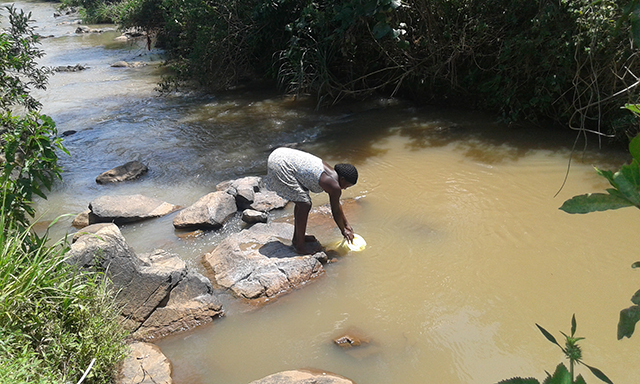Global research on water has largely focused on scarcity and health issues related to what is in the water, but the burden and risks of how water is retrieved and carried has been overlooked.
Northwestern researchers Sera Young, associate professor of anthropology and a fellow at the University’s Institute for Policy Research, and Vidya Venkataramanan, postdoctoral fellow in anthropology at Weinberg College of Arts and Sciences and the Center for Water Research, are co-authors of a large, multi-country study revealing the widespread nature of water-fetching injuries in low- and middle-income countries. They found that these injuries more frequently impact women and compound the issue of water insecurity.
“Water fetching injuries happen often,” Young said. “Our analysis shows 13% of the respondents reported some sort of injury, and that women were twice as likely to be hurt as men. The study reinforces the disproportionate burden water scarcity has on women, on rural populations and on those who don’t have water sources close to their home, making it an issue of social equity and gender equity as well as poverty.”
Young and Venkataraman discuss key findings of their global study, implications for policymaking, and next steps.
What prompted the study?
When it comes to water, the bulk of our attention goes to what is in it. It’s easy to forget that for the millions of people who don’t have the luxury of clean drinking water at their home, they can face many dangers before the water even touches their lips. - Sera Young
What were the key issues you wanted to address?
Given how many ways there are to hurt oneself when getting water to your home, such as falls, traffic accidents, animal attacks and fights, the dangers of water acquisition and transportation have received relatively little attention. We wanted to explore how frequently such water-fetching injuries might occur, and what factors might predict such injuries. We were able to use a large global dataset to begin to understand these trends. - Sera Young
What is the most significant finding?
Thirteen percent of the respondents reported some sort of injury, and women were twice as likely to be hurt as men. Thirteen percent is a big number, but it is probably an underestimate. It’s highly likely that more people would have reported injuries if the survey had more detailed questions. - Sera Young
What are the social and policy implications?
It seems likely that water-fetching can contribute considerably to the global Water, Sanitation and Hygiene (WaSH) burden, but it usually goes unmeasured because we typically think about access and water quality. It is, therefore, a greatly underappreciated, nearly invisible public health challenge.
It’s really important that data on water-fetching injuries are systematically collected so that we can know the true burden of water insecurity. Currently, all of the broken bones, spinal injuries, lacerations and other physical injuries are not accounted for in calculations about the burden of water insecurity. - Vidya Venkataramanan
How do these findings shed light on global inequalities and water scarcity?
These data underscore the need for safe water interventions that prioritize personal physical safety alongside traditional global WaSH indicators of improved water quality and proximity to the home that are used to measure progress towards Sustainable Development Goal 6.1. - Vidya Venkataramanan


